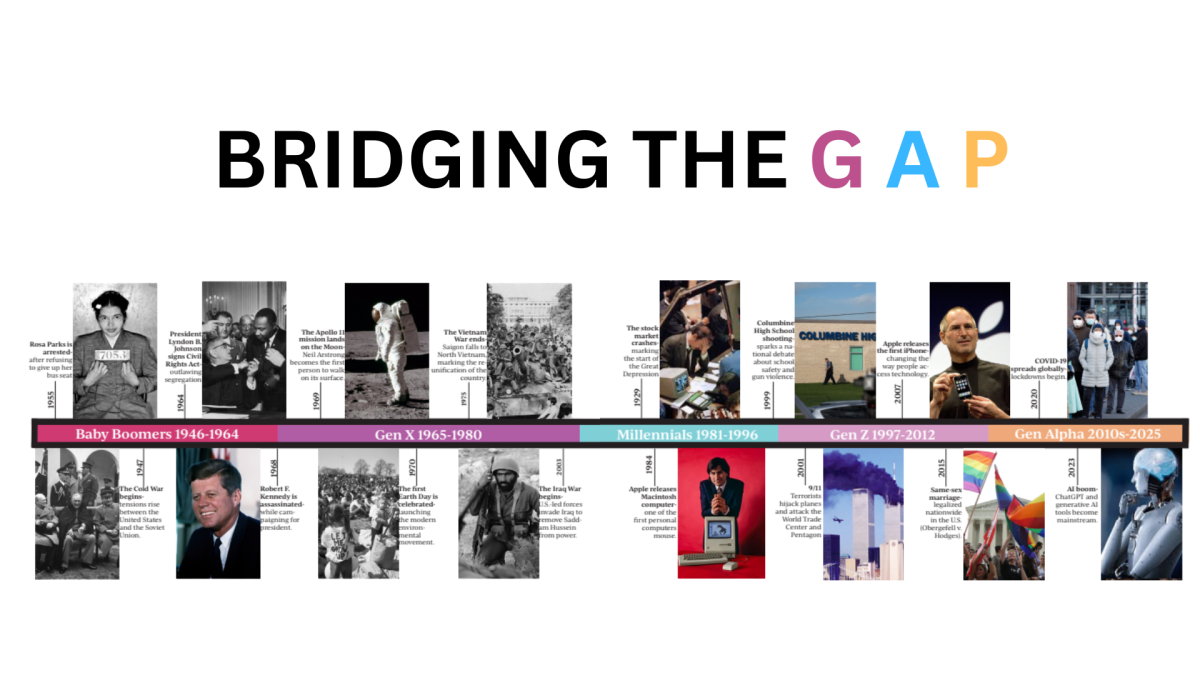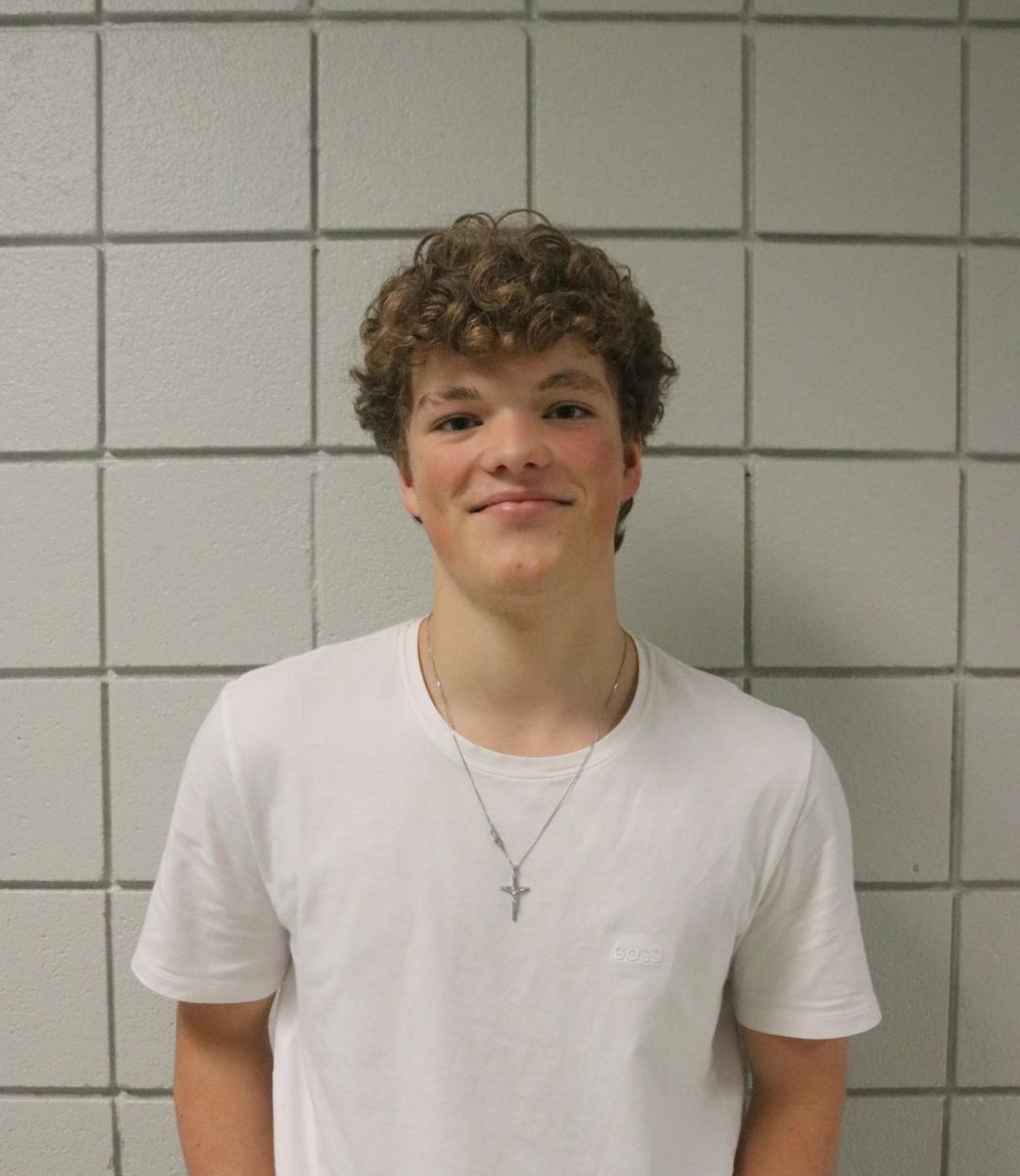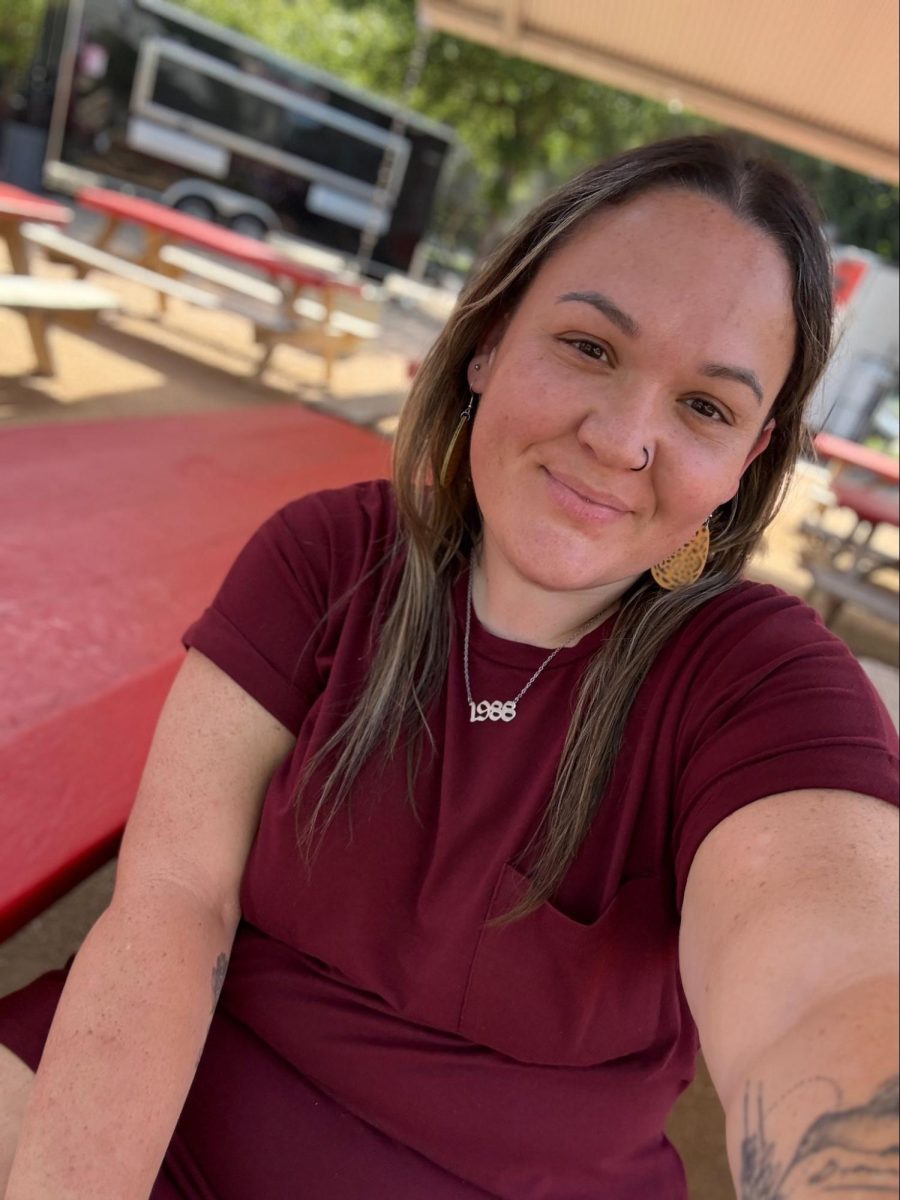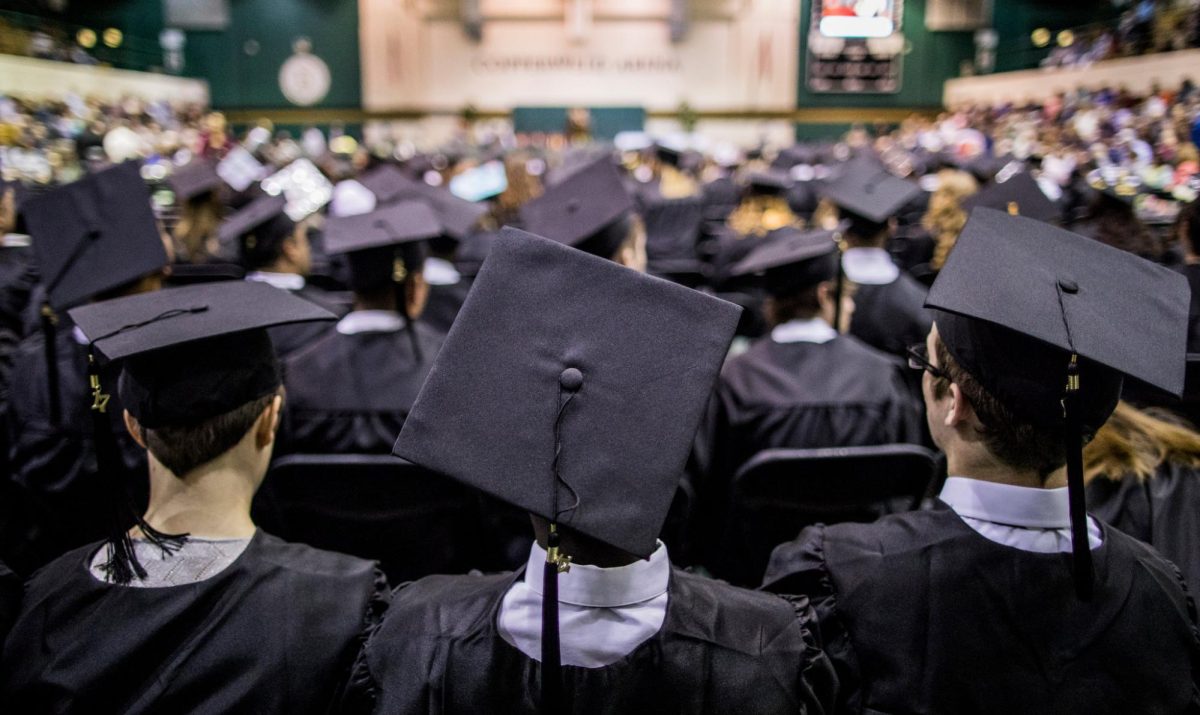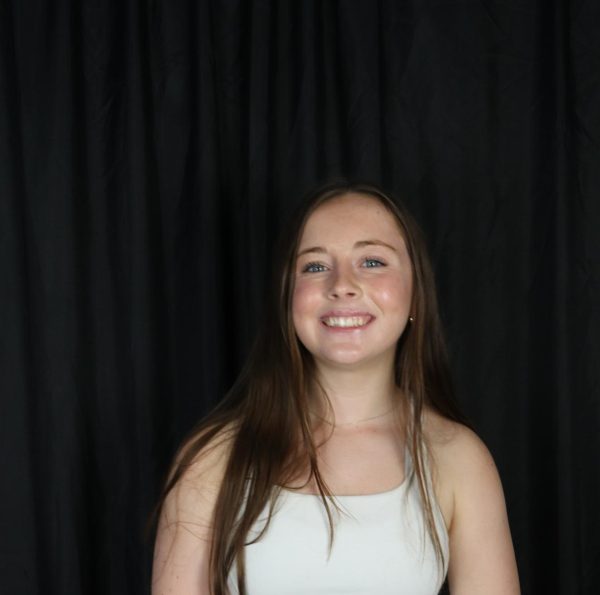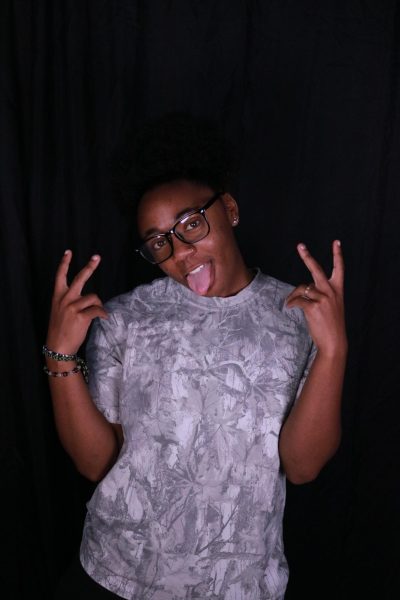In classrooms, teachers remind students to “work harder” while their students push back, saying balance and mental health matter too. A student scrolls on their phone while an administrator complains that “kids these days never look up from their phones.” These moments highlight something much bigger, a generational divide that shapes how people think, act and connect throughout McNeil’s campus.
Credit recovery teacher and girls varsity basketball coach Lee Thomson has been educating for 28 years, spending 20 of those years here at McNeil. Thinking back to when he was in high school, Thomson notices the differences and changes in education, but acknowledges the importance of teachers in his own life.
“We didn’t have all the computers and all the stuff that y’all have technology wise, but the teachers were more concerned about you,” Thomson said. “It wasn’t about what you had, what you didn’t have, the teachers made sure that you actually learned something, and they cared about you. My seventh grade teacher is the reason I’m sitting here right now, because she actually came to my house, she came in and talked to my mom and changed my whole life.”
Thomson remembered how discipline and mentorship were handled differently when he was growing up. Today, parents and adults are more inclined to engage with their children, but for Boomers, like Thomson, childhood wasn’t so.
“My role goes back to experience, the teachers for me growing up there was no room for error, right? But with this generation, for example, if y’all are having problems at home y’all would not be able to focus,” Thomson said. “In my day, whether you’re hungry or not hungry, you gotta go to school.”
While the job of teaching has evolved, Thomson said one thing stays the same, the importance of being a role model for students, explaining that students are perceptive, and can tell when their educators truly care for them.
“But how things change are being a role model, no one is perfect, but I think that being a role model goes a long way,” Thomson said. “Y’all know teachers who don’t care, y’all know teachers who are serious, this is y’all school and y’all know what’s up. That’s the bottom line.”
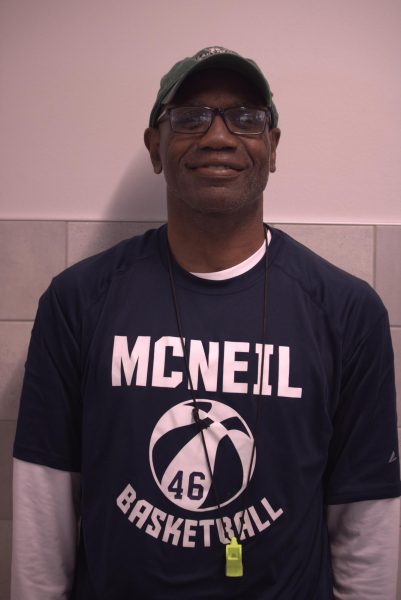
The importance of investing in your students runs deep in Thomson, despite it being his biggest strength, Thomson also recognizes it as also being his biggest struggle.
“I think overall with me, I think my biggest problem is that I care,” Thomson said. “I mean, I think a lot of teachers that students deal with, I think they don’t care, you have to get to know the kids, respect the kids, and see how the kids feel nervous and respected. It’s one of those things where you have to care, If you don’t, my mom said, ‘if you don’t care about anything or what you’re doing, you shouldn’t even be doing it.’’’
He remembered how discipline and mentorship as a high school athlete were handled much differently when he was growing up.
“My teachers and my coaches helped me be responsible for whatever, like my coach wasn’t just my basketball coach, he was like, my dad, my brother, my friend,” Thomson said. “My coach was everything you know, and I got in trouble. I didn’t go to the office, they sent me to the coach’s office and the coach took care of business. The thing that changed is that coaches were more into who the kid was rather than what the kid could do.”
Thomson didn’t grow up with technology, so as a veteran teacher, adapting to new technology has sparked challenges for him.
“I think I think the whole technology thing is good, but it’s hard for me because I’m not technologically savvy,” Thomson said. “ I went [back to school] several years ago and I had to take a technology class because that’s something to state that added. But I do think technology is good because technology is innovation, I mean, that’s the way it is, right?”
With the growing amount of accessible technology research and large amounts of learning have shifted online, students today benefit from faster access to information, but despite its convenience students are now left to navigate what is trustworthy and what’s not.
“We used to have all those reference books, encyclopedia books, and all that stuff,” Librarian Amelia Lewis said. “Now all that’s online, and I think it makes it quicker for students to find things, but I also think it’s harder for students to try to disseminate between what is accurate information versus just Googling and getting like any tinfoil hat website.”
In a study conducted across Singapore and Australia by Nanyang Technological University in Singapore and Singapore-based research agency Research Network, 583 young people aged 13-25 and their parents were surveyed. It found that prolonged social media usage is associated with difficulties in sustaining focus and engaging with content longer than one minute. Despite the negative effects associated with social media when it comes to our attention span Lewis also sees the positives social media brings, specifically to the Library.
“I think research shows our attention spans are not as long as they used to be,” Lewis said. “Social media has a play in that, I mean, there are lots of things, but I will say for social media, ‘Book-Tok’ has been huge. I love that people are making those movements allowing me to say ‘hey, I see that you’re here for social media, but let me tell you about these amazing books,’ and because of that we have all kinds of kids coming in.”
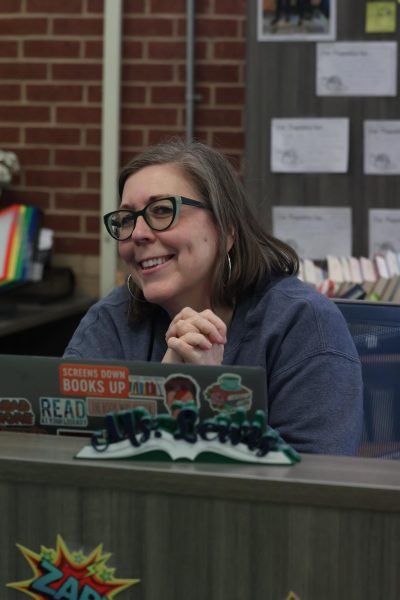
As time goes on expectations for students and the requirements in the learning space have shifted. Lewis, who started at McNeil in 2008 has noticed this change, specifically in what teachers have been assigning their students.
“When I first came into the library, students were reading I don’t want to say higher level books, but there was still the discussion in classrooms about students reading college level materials, upper level materials and stuff like that,” Lewis said. “So we had a classic section, and there was a modern classic, the difference was classics, basically they’re dead, modern classics, they’re still living.”
Lewis said she noted a larger shift into the type of reading students typically enjoy today with the release and rise to popularity of the Twilight movies.
“It totally transformed the YA (young adult) genre into what we kind of have today, students don’t really read many adult titles anymore,” Lewis said. “ That’s not a bad thing, but that’s the trend, now there’s actually books that talk about what young adults are interested in.”
This shift in the culture of reading for students shows the generational preferences shifting from more classic and adult books, to more books targeted to students and young adults.
“What’s interesting is it’s a cycle,” Lewis said. “So when we genre-fied our books, we decided we were going to take out modern classics and take out classics, and we are gonna inner shelve it all together because kids want to read fantasy, they want to read a mystery, they don’t care if it’s a classic.”
Lewis explained how the library is more focused on helping students see themselves in the books they read, while also learning about different perspectives different from their own. She referenced professor Rudine Sims Bishop’s idea of books as “windows,mirrors, and sliding glass doors.”
“You want to see yourself reflected back, like looking into a mirror. Then there is the window, where you look out and see what’s going on in the world, and then the sliding glass door, that’s when you can actually step into someone else’s experience,” Lewis said. “Thats really big, we talk about that a whole lot more now in the Library.”
This concept, Lewis said, has become more and more central to how she thinks about building inclusive activities and creating a safe, welcoming community for all students who enter the library. “We always say the goal of the library is to have at least one book for every patron they can find somewhere,” Lewis said. “Dr. Bishop makes the point that it’s crucial for children from marginalized groups to view themselves in the books that they read, everybody should be able to find themselves in a library.”
English IV teacher Isabella Gonzalez represents the new generation of teachers, one who understands both the written and digital world, setting boundaries but valuing connection, viewing generational change not as a divide, but as an opportunity for deeper understanding.
For Gonzalez, being apart of Gen Z, and being so close in age to her students has given her a different perspective on how things have changed, not only in education, but in culture, communication, and expectations
“I have two brothers, one is eight years younger than me, and the other’s, a senior in high school, so they’re also Gen Z,” Gonzalez said. “But, we grew up with different shows, different music, different kinds of all things, when they were born, social media was already a thing, and pretty much everyone had an iPhone.”
Gonzalez, who was a Senior in high school just six years ago, has noticed a shift in students’ motivation to do work, and how social media and short-form content have affected her students’ and herselves’ focus and stamina.
“When I was in high school, it was pretty common to read text very quickly, to write essays very quickly, and now I see a lot more delay in that,” Gonzalez said “Sometimes students will even complain about writing a paragraph and I’m like, guys, this is nothing. I think all of our attention spans have gone down, especially because we’re always on social media and our phones, even for me there are times where I can’t concentrate on my book because I’m going to check my phone.”
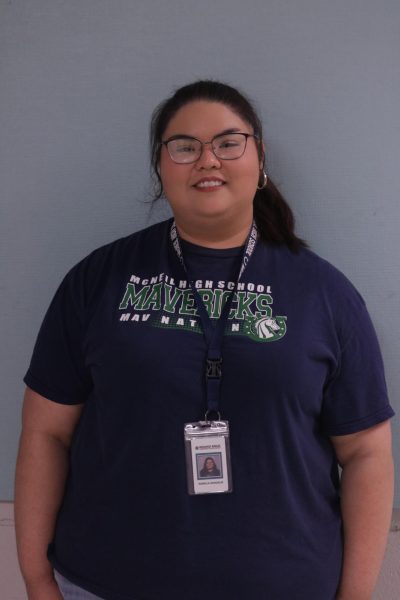
Gonzalez also expressed concern about how AI tools like ChatGPT are changing the way students approach their school work. For her, it’s not about catching cheating, it’s about encouraging students to want to use their own ideas and perspectives.
“Some students think that I can’t tell what their writing is versus a computer, and it’s actually very easy to tell, especially because I know how you guys talk and I know how you handwrite,” Gonzalez said. “They’re not even using their thoughts, which is frustrating, because if I give you a topic like tell me what your favorite memory of your childhood was, why are you going to use AI to tell you to do it for you? I expect you to be able to use your own brain to think and tell me your opinions on things and your perspectives.”
Being a younger teacher does have its advantages, but it also has its challenges. One way Gonzalez builds connections is by understanding the language her students use, while still making sure she sets boundaries between herself and her students.
“I like to talk to students as normal regular people, I don’t try to demand this, like, I’m in charge of everyone because I think that’s definitely not effective when we’re so close in age, but It can be difficult at times because sometimes students want to talk to me like your friend, and I’m like love to you guys, but we’re not besties,” Gonzalez said.
Freshman Abby Osborne reflected her relationships with teachers of different ages, and said the connection between students and teachers often depends less on age and more on approachability.
“Some of the older teachers are a little bit stricter, and I feel like I work better with teachers who are more, I wouldn’t say laid back, but I would say more, want to try to be friends with their students and stuff,” Osborne said. “I guess it doesn’t depend on the age, I think it depends on who they are.”
Similarly, Senior Camille Prevost agrees. As a student of Gonzalez, Prevost acknowledges Gonzalez’s ability to connect with her senior students.
“I do find myself being closer with younger teachers because I feel like I can really relate to them,” Prevost said. “I love to talk to her [Gonzalez], and she knows about a lot of the things that I know about, like current trends and everything,I feel like she relates to me on more of a personal level than my older teachers.”
While Gonzalez acts as a mentor to her students, she also values the older generations of educators she works with.
“The teachers that have been here longer definitely are like mentors to us younger teachers, they tell us a lot,” Gonzalez said. “They give us so much help and like guidance, not only in the classroom, but with personal things, and helping us balance our work life balance. Most of the teachers that I’ve met here at McNeil are very helpful and very kind and they really do care about not only their students, but the teachers as well.”
English III teacher Erin Balfour, who has been teaching for 21 years and here at McNeil for 20 of those years is one of the teachers who Gonzalez mentioned acts as a mentor to her. Balfour who is right between Gen X and Millennial says she finds herself connecting with both younger and older generations of teachers.
“I think I share traits with both groups, there’s parts of my personality that are very much Gen X and then there’s parts of my personality that start to show some of those millennial traits,” Balfour said. “I think that’s kind of a cool thing about being in the middle, I feel like I can do both, I definitely have colleagues that are more the boomer generation that I feel like I understand and connect with, and then I also have mentored a lot of our younger teachers who are even as early as not just millennial, but Gen Z, and so I feel like I’m pretty adaptable in terms of being able to connect with all of those groups.”
As a parent of Gen Z kids herself, Balfour said she feels like she has an edge when it comes to staying in tune with the current generation.
“One of the things that helps me a lot as a teacher is because I have kids that are my students’ ages, I feel like I keep more current than maybe a lot of people,” Balfour said. “And so I think that’s helped me balance those generational divides because I’m more aware of what my students’ generation is experiencing because I’m a mom of Gen Z.”
With this understanding of her students, Balfour is quick to point out the differences from when she was growing up compared to her Gen Z students.
“When I grew up, we were passing physical notes in class, we didn’t have cell phones, our pictures took weeks to develop, and now you guys are always connected,” Balfour said. “I feel like that creates a pressure to always feel involved in something. I think it was just a lot of pressure for students.”
This awareness shapes how she teaches. With her approach being rooted in what she didn’t understand when she was younger.
“We grew up in a time when we were expected to figure a lot of things out for ourselves,” Balfour said. “That was frustrating, and so having lived through that, I want to be a teacher that’s really helpful, so I think that’s probably shaped me the most. It’s helped me understand that I need to be more aware of how to help people.”
Although Balfour appreciates newer digital tools, Balfour still values traditional learning methods just as much.
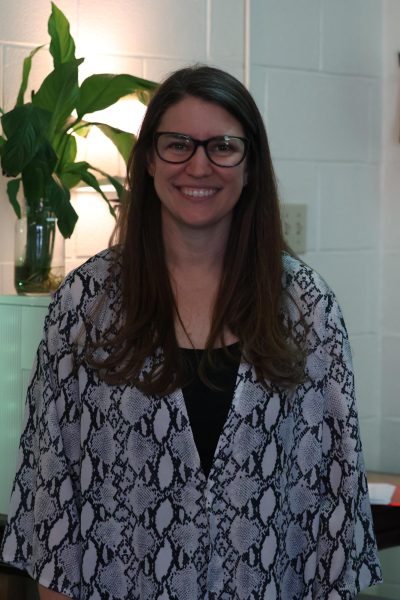
“I love technology, I’ve pioneered a lot of the tech that the district uses,” Balfour said. “But, there’s research to support pencil and paper activities, things with markers and posters, and I feel like a lot of the time we spend so much of our lives staring at screens that it’s kind of nice to get a break from the blue lights and instead engage in different ways.”
An English teacher, Balfour has experienced the growing conversation around book censorship, and parent influence in what students are reading in the classroom.
“We definitely have more parents who are choosing to censor what their students have access to,” Balfour said. “But here in Round Rock ISD, we have a process for that, so because we have such a good process that we’ve created over the last 20 years or so, we don’t really have some big issues, instead, it’s more handled on an individual level.”
When it comes to the growing use of AI tools, Balfour said she tries to understand why her students want to use it. But adapting to fast changing tools like ChatGBT is a challenge in itself.
“There’s academic pressure on students, so there is an appeal to an easy solution, and AI is definitely a tool that can provide that,” Balfour said. “However, I don’t think it means that AI absolutely should be banned in education, I think there’s a place for it, and I think education is struggling to figure out how to use AI as a tool, and because the technology is progressing so quickly, it’s a big challenge because as soon as we kind of figure out what we want to do, everything shifts.”
Balfour also noted her high school experience took place in a very different era, and as the threats to school safety grew, the precautions to prevent tragedy have also grown.
“I was in high school when Columbine happened, which was the first major school shooting in the United States, and schools had never experienced anything like that,” Balfour said. “So over the last 24 years, there’s been a big push to make sure schools are much safer, when I was school we didn’t have things like secure doors, we didn’t have things like badge readers, so I do think there’s been a lot of progress made to try and keep schools safe as the threat to those schools have increased.”
Across our campus, five generations are shaping and changing what it means to learn, teach, and connect. From veteran teachers like Thomson who emphasize discipline and mentorship, to librarians like Lewis, who highlight the important culture of reading. Younger teachers like Gonzalez bridging the gap between students and staff, and experienced mentors like Balfour, each perspective reflects growth. In the end, the classroom is not just a place to learn, it’s a space for generations to meet, learn from each other, and continue to shape the future.

